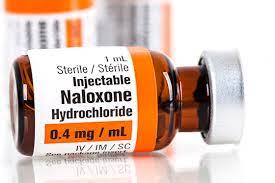Illicit drugs kill 206 British Columbians in April
Preliminary data from the BC Coroners Service shows that communities throughout the province continue to be devastated by deaths due to unregulated drugs, with 814 lives lost in the first four months of 2023.
As has been the case throughout the crisis, the illicit drug supply remains highly volatile, challenging people’s best efforts to use safely and challenging life-saving responses. Fentanyl is present in about eight of every 10 deaths, almost always in combination with other substances. April 2023’s reporting also notes an increase in the presence of benzodiazepines, which is largely the result of enhancements to benzodiazepine testing by the Provincial Toxicology Centre.
“Illicit fentanyl continues to be the main and most lethal driver of B.C.’s drug-toxicity public-health emergency, having been detected in 86% of deaths in 2022 and 79% of deaths in 2023,” said Lisa Lapointe, chief coroner. “Cocaine, methamphetamines and/or benzodiazapines are also often present. This drug poisoning crisis is the direct result of an unregulated drug market. Members of our communities are dying because non-prescribed, non-pharmaceutical fentanyl is poisoning them on an unprecedented scale.”
B.C.’s representative for children and youth, Jennifer Charlesworth, said there is no evidence that diverted safer supply has been a factor in the toxic drug-related injuries and deaths of youth that are reported to her office.
“Based on the reports of critical injuries and deaths that my office reviews every month, we have not seen any indication that youth are using from diverted supply,” Charlesworth said. “The injuries and deaths reported to us are as a result of youth accessing the illicit supply and they are typically using an array of substances. Through our advocacy work and in-depth reviews, young people are advising us that they are accessing an illicit supply in order to cope with the trauma that they are dealing with in their lives.”
April 2023 was the 31st consecutive month in which at least 150 lives were lost to unregulated drugs in B.C., and the 13th month in which more than 200 deaths were reported. The total number of deaths in April equates to about 6.9 lives lost every day. Rates of death remain extremely elevated throughout the province, with three health authorities – Vancouver Coastal, Island and Northern – reporting record high rates of death in the first quarter of the year. The provincewide rate of death through the end of April is 45.2 per 100,000 residents.
At least 12,046 British Columbians have been lost to toxic, unregulated drugs in the seven years since the public-health emergency was first declared in April 2016.
“It’s critical that we rely on science, reliable data and legitimate reporting as we respond to an emergency that has taken the lives of so many of our family members, friends and neighbours,” Lapointe said. “We mustn’t lose sight of the fact that the root of this crisis was the arrival of illicit fentanyl in B.C. in 2013, and that it has been driven by illicit fentanyl ever since. Safer-supply prescribing and the decriminalization of small amounts of some drugs for personal use are recent health-centred approaches to a complex health challenge. Anonymous allegations and second-hand anecdotes suggesting that these new initiatives are somehow responsible for the crisis our province has been experiencing since early 2016 are not only harmful, they are simply wrong.”
Additional key preliminary findings are below. Data is subject to change as additional toxicology results are received:
- In 2023, 70% of those dying were 30 to 59, and 77% were male.
- By health authority, in 2023 the highest number of unregulated drug deaths have been in Vancouver Coastal and Fraser health authorities (257 and 221 deaths, respectively), making up 59% of all such deaths during 2023.
- By health authority, the highest rates of death in 2023 have been in Northern Health (62 deaths per 100,000 individuals) and Vancouver Coastal Health (60 per 100,000).
- By health service delivery area, in 2023, the highest rates were in Vancouver, Northwest, Northern Interior, North Vancouver Island and Central Vancouver Island.
- By local health area, in 2022, the highest rates were in Vancouver – Centre North, Terrace, Merritt, Hope and Prince George.
- One death has occurred at an overdose prevention site (OPS). Previous reporting indicated that two such deaths had occurred at an OPS. However, after further investigation, one death has now been excluded.
Learn More:
Unregulated drug death report (Data to April 30, 2023):
https://app.powerbi.com/view?r=eyJrIjoiZWMzMjA4MTQtZDJmZS00MzMxLWE2NDQtNTNmZjkzOTY4NTlmIiwidCI6IjZmZGI1MjAwLTNkMGQtNGE4YS1iMDM2LWQzNjg1ZTM1OWFkYyJ9
Unregulated drug death: Type of drug data report (Data to Jan. 31, 2023):
https://www2.gov.bc.ca/assets/gov/birth-adoption-death-marriage-and-divorce/deaths/coroners-service/statistical/illicit-drug-type.pdf
Note: The Unregulated drug death report is updated monthly. The Unregulated drug death: Type of drug data report is updated quarterly.
BC Coroners Service Death Review Panel: A Review of Illicit Drug Toxicity Deaths:
https://www2.gov.bc.ca/assets/gov/birth-adoption-death-marriage-and-divorce/deaths/coroners-service/death-review-panel/review_of_illicit_drug_toxicity_deaths_2022.pdf
Mode of Consumption Data – Knowledge Update:
https://www2.gov.bc.ca/assets/gov/birth-adoption-death-marriage-and-divorce/deaths/coroners-service/statistical/mode-of-consumption.pdf
BC Centre for Disease Control Knowledge update on hydromorphone and illicit drug toxicity deaths:
http://www.bccdc.ca/resource-gallery/Documents/Statistics%20and%20Research/Statistics%20and%20Reports/Overdose/2021.09.15_Knowledge%20Update_Hydromorphone%20and%20drug%20toxicity%20deaths.pdf
Toward the Heart: http://www.towardtheheart.com
Stop Overdose BC: https://www.stopoverdose.gov.bc.ca
BC Centre on Substance Use: http://www.bccsu.ca
Risk mitigation prescribing guidelines in the context of dual public-health emergencies:
https://www.bccsu.ca/wp-content/uploads/2020/04/Risk-Mitigation-in-the-Context-of-Dual-Public-Health-Emergencies-v1.5.pdf
Lifeguard app:
http://www.phsa.ca/about/news-stories/news-releases/2020-news/new-lifeguard-app-launched-to-help-prevent-overdoses
BC Centre for Disease Control overdose response indicators:
http://www.bccdc.ca/health-professionals/data-reports/overdose-response-indicators
BC Centre for Disease Control factsheet on etizolam:
https://towardtheheart.com/assets/uploads/1609802595WXFJCmRP6tu1qI04J8t6BzVqs























